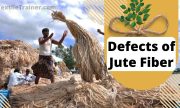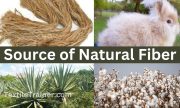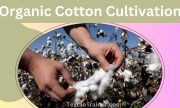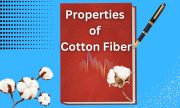Impurities in cotton fiber refer to any foreign materials or substances that are present in the cotton fiber that are not part of the pure cotton fiber. These impurities can include various types of debris such as leaves, stems, dirt, and other plant parts that can become mixed in with the cotton during harvesting and processing.
Impurities can also include materials that are naturally present in the cotton fiber, such as wax, which helps to protect the plant from water loss and other environmental stresses, but can also make the cotton fiber sticky and difficult to process. Additionally, cotton fiber can be contaminated by microbes such as bacteria and fungi, as well as chemicals such as pesticides and herbicides that are used during cotton production.
The presence of impurities can affect the quality and suitability of the cotton fiber for use in textiles. Impurities can cause problems during textile processing, such as clogging machinery, and can also affect the appearance and quality of the final product. To ensure the quality of cotton fiber, various cleaning and purification steps are typically taken during processing to remove impurities and ensure that the cotton fiber meets certain standards for strength, length, and other characteristics.
Impurities on raw cotton:
Raw cotton can contain various types of impurities that can affect the quality of the cotton and the efficiency of the processing. Some of the common types of impurities found in raw cotton include:
- Trash: This includes any extraneous matter that can be found in the cotton, such as leaves, stems, and other plant debris. Too much trash can make processing difficult and reduce the quality of the cotton.
- Seed coat fragments: Cotton fibers are attached to the seeds of the cotton plant, and during processing, the seeds must be removed. However, some small pieces of seed coat may remain in the cotton fiber, which can affect its quality and cause problems during processing.
- Wax: Cotton fibers contain a natural wax that helps protect the plant from water loss and other environmental stresses. However, excessive wax can make the cotton sticky and difficult to process.
- Sand and soil: During growth and harvesting, cotton can pick up sand and soil particles that can be difficult to remove and can cause wear on the processing equipment.
- Pesticides and herbicides: Cotton plants may be treated with pesticides and herbicides to control pests and weeds. These chemicals can remain on the cotton fibers and can pose a health risk to workers during processing.
- Microbial contamination: Cotton fibers can be contaminated by microbes such as bacteria and fungi, which can cause discoloration and reduce the quality of the cotton.
Controlling these impurities is an important part of the cotton processing industry. Raw cotton is typically cleaned and ginned to remove impurities before it is shipped to textile mills for further processing. Ginning is a process that separates the cotton fibers from the seeds and removes most of the impurities. Additional steps may be taken to further clean the cotton, such as carding, which removes remaining impurities and aligns the fibers in preparation for spinning.
After the cotton is ginned and cleaned, it can be processed into various forms for use in textiles. One of the main forms of processed cotton is called “cotton lint,” which consists of the long, natural fibers of the cotton plant. Cotton lint can be further processed into yarn, which is used to make fabrics, clothing, and other textile products.
To ensure that the cotton lint is of the highest quality, additional cleaning steps may be taken to remove any remaining impurities. For example, the cotton may be run through a series of machines called “blow rooms” that use air flow to remove any remaining trash, dust, or short fibers. The cotton may also be treated with chemicals to remove any remaining wax or other impurities.
In addition to the cleaning process, cotton may also be tested for quality and purity. Quality tests may include measures of fiber length, strength, and color. Purity tests may include tests for pesticide residues, microbial contamination, and other impurities.
Overall, the processing of cotton involves multiple steps to remove impurities and ensure that the cotton is of high quality and purity. This is important not only for the final products made from cotton, but also for the health and safety of workers in the processing industry.
Here is a table showing the typical percentage of impurities found in raw cotton fiber:
| Impurity | Percentage range |
| Wax | 0.2-1.5% |
| Protein | 0.2-1.5% |
| Pectin | 0.5-1.5% |
| Dirt, dust, and sand | 0.5-1.5% |
| Seed coat fragments | 3-6% |
It’s important to note that the percentages of impurities in cotton fiber may vary depending on the quality of the cotton and the methods used for harvesting and processing. However, this table provides a general idea of the relative amounts of impurities that can be found in cotton fiber.
Cotton is a widely used natural fiber in textile production, and it is important to remove these impurities before the cotton fiber can be spun into yarns or fabrics. The process of removing these impurities is called ginning and it involves mechanical cleaning and separating the cotton fibers from the seeds and other impurities. This process results in cleaned cotton fiber that can be further processed to create a wide range of cotton products such as clothing, bed sheets, towels, and many more
Impurities in processed cotton:
Processed cotton that has gone through cleaning and purification steps can still contain some impurities that can affect its quality and suitability for textile production. Some of the common impurities found in processed cotton include:
- Short fibers: These are small, broken pieces of fiber that can reduce the strength and quality of the cotton. Short fibers can result from mechanical damage during processing or from immature cotton fibers.
- Neps: Neps are small knots or tangles of fibers that can be caused by a range of factors, including immature fibers, trash, and processing equipment. Neps can cause unevenness in the fabric and affect its overall quality.
- Contamination: Processed cotton can still be contaminated with various substances, including dust, oil, and other debris. Contamination can affect the texture and appearance of the cotton and can also cause problems during dyeing and finishing.
- Lint: Even after ginning and cleaning, small amounts of lint and other fibers may remain in the processed cotton. While this is generally not a significant problem, it can affect the consistency of the finished product.
To ensure the quality and purity of processed cotton, additional cleaning and quality control steps may be taken. For example, the cotton may be passed through additional machines to remove short fibers and neps, or it may be treated with chemicals to remove any remaining contaminants. Quality control measures may include testing for fiber length, strength, and color, as well as checking for any remaining impurities. By taking these steps, manufacturers can ensure that the cotton they use is of high quality and suitable for use in a range of textile products.






